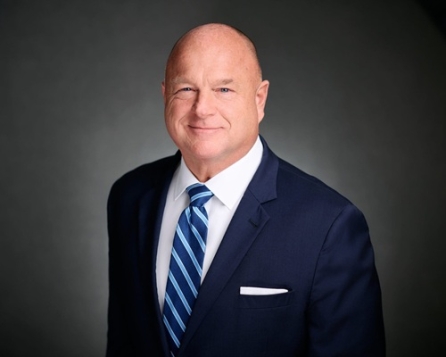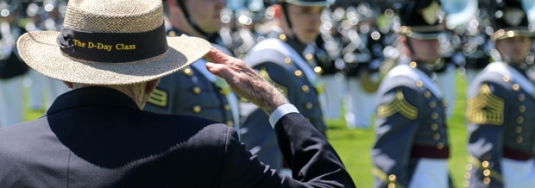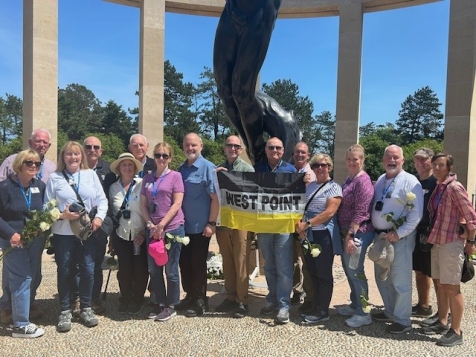The West Point Association of Graduates (WPAOG) has named the 1998 recipients of the Distinguished Graduate Award. This annual award has been bestowed upon those West Point graduates whose character, distinguished service, and stature draw wholesome comparison to the qualities for which West Point strives, in keeping with its motto: “Duty, Honor, Country.” The 1998 Distinguished Graduate Award Recipients are:
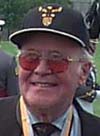
MG (R) Adrian St. John, II ’43 Jan
Peace — A soldier’s ultimate goal. Fairness — A negotiator’s goal. Democracy — The equality and respect for the individual within the community. These were Major General Adrian St. John’s goals which he succeeded in accomplishing in a lifetime of distinguished service and extraordinary achievement. General St. John’s tireless efforts have exemplified the words in West Point’s motto: Duty, Honor, Country.
Read More
“What did this officer do best?” General Fillmore K. Mearns wrote simply, “Managed his people and his other resources.” General Cobb wrote that General St. John’s “. . . meticulous attention to detail, outstanding organizational ability and personal supervision resulted in an imaginative and unique resolution to complex problems . . .” General James Collins wrote that he was impressed with Lieutenant Colonel St. John’s ability to explain complex command arrangements and relationships into understandable thoughts and words.
Adrian St. John’s entire career as a military officer and as a statesman was defined by his intuitive ability to manage people and their resources. This talent for relating to people combined with his military training and discipline enabled him to enter areas and negotiations throughout his career that were often expressly forbidden to other U.S. officials.
His military service began with the war in Normandy and finished 54 years later with the combat in Broko, Bosnia. General St. John entered the United States Military Academy in 1939, weeks before Germany invaded Poland, and he graduated with the Class of January 1943.
Lieutenant St. John’s first assignment was company commander in the 15th Cavalry Reconnaissance Squadron (Mechanized) in 1943 in the European Theater of Operations. By 1945, at the end of the war, he was the Intelligence Staff Officer working for General Clay at Headquarters, Berlin Command.
Adrian St. John returned to the U.S., where, in January 1951, he completed his Master of Arts degree in International Relations at the University of Virginia. He was then assigned as a G3 in Korea and was involved in operational matters and political military affairs affecting China and Southeast Asia.
His next mission, which would form the boilerplate for many of his succeeding assignments, was China desk officer, Army General Staff, Washington, D.C. from 1951–1953, where he was often sent to sensitive, restricted areas to assess or negotiate critical situations. The then Major St. John was sent to Formosa at the personal request of the Chairman of the Joint Chiefs of Staff, General Omar Bradley. He reported to the Kuomintang Chairman of the Combined Chiefs of Staff, General Chou Chihjou. On a secret visit arranged by the Chinese to the Nationalist guerrilla forces on the Chinese coastal islands, which was officially off-limits to U.S. personnel, Major St. John was severely injured during an explosion that killed several senior Chinese officials. Despite these injuries, he continued to report from his hospital bed in Formosa. His report contributed to a Joint Chiefs of Staff recommendation to the newly elected Republican administration that U.S. Military and Advisory support be extended to Nationalist-occupied off-shore islands, which ultimately became formal U.S. policy.
Lieutenant Colonel St. John graduated from the Command and General Staff College in 1954, asked for and was granted an Infantry detail, and went to Korea for one year as the battalion commander of the 3/31 Infantry, and later he commanded the 73rd Tank Battalion. He returned to Kansas and the Command and General Staff College as a member of the faculty where he taught in the Department of Infantry Operations, and was part of the group that revised the nuclear weapons doctrine. This included establishment of the Senior Officer’s Nuclear Weapons Employment course. The final portion of his CGSC tour was spent on a special mission to Iran as the faculty advisor at the Iranian Imperial War College. While in Iran, Lieutenant Colonel St. John gained the confidences of senior Iranian officers and as a result was invited to stay and visit Iranian defense forces in the border areas, normally restricted to U.S. Military Assistance Advisory Group and Attaché personnel.
After graduating from the Army War College in 1960, Lieutenant Colonel St. John was assigned as the Southeast Asia Plans officer, G3, Headquarters, U.S. Army Pacific, where he was primarily responsible for unilateral and multilateral command relationships while working on Southeast Asia Treaty Organization (SEATO) Operations Plans.
Lieutenant Colonel St. John next held a two-year post at the Long Range Plans Branch, Plans Directorate, Office of the Joint Chiefs of Staff. He had a major role in the rewrite and restructuring of the Joint Long Range Strategic Study — one of the three core papers of the JCS planning system.
From 1966 until 1967, Colonel St. John served as the Chief of the Surface Plans and Operations Division in the Office of the Assistant Chief of Staff, J-3, Military Assistance Command-Vietnam. Colonel St. John had frequent contact with high-ranking officials of the Republic of Vietnam. Because of his unique knowledge and awareness of Joint Staff functioning, he coordinated plans that ensured Republic of Vietnam/U.S. cohesiveness and a smooth counter-insurgence effort.
In 1967, Colonel St. John returned to Europe to command the 14th Armored Cavalry Regiment. Two years later, upon his promotion to brigadier general, he was named Assistant Division Commander of the 4th Armored Division.
In 1970–1971, he was Chief, Strategic Plans and Policy Division, Office of the Joint Chiefs of Staff. General St. John’s ability for effective communication again was directed toward special missions, this time on the home front. General St. John’s responsibility was not only Vietnam but, more important, he made significant contributions to improving United States military strategy in a time of significant change in political guidance. In 1971, he was assigned as Chief, Plans Directorate, Office, Deputy Chief of Staff, Operations, on the Army Staff.
In 1972, General St. John became the Commanding General of the 1st Armored Division in Germany. He left there in 1974 and assumed responsibility as the Vice Director of the Joint Staff, Office of the Joint Chiefs of Staff. He retired from active duty after 34 years at the rank of Major General in 1977.
General St. John continued to leverage his ability to work with people as a member of the advisory council on international security affairs on the Republican National Committee from 1977–1980. He was a delegate to the Virginia State Republican Convention in 1980 and 1981. In 1981, he also received his second master’s degree from American University.
Recalled to government service in 1982, Adrian St. John served for ten years as the Joint Chiefs of Staff representative to the Mutual and Balanced Force Reductions negotiations, the Conventional Stability Talks, and the Conventional Armed Forces in Europe talks. In his capacity as senior Department of Defense advisor and primary military expert to six ambassadors over a period of ten years, his outstanding efforts made possible the achievement of United States Goals in these negotiations.
Commended by three presidents for his outstanding efforts on behalf of world peace, General St. John has been awarded the Defense Medal for Distinguished Public Service, the Presidential Distinguished Citizen Medal, and the Department of State Superior Honor Award.
In 1994, General St. John actively participated in the Conference on Middle East Arms Control and in 1995 chaired a 17-nation Arab-Israeli working group meeting in Jordan which developed a potential protocol on military provisions for a possible Middle East peace treaty.
General St. John’s most recent assignment was in 1997, fifty-four years after experiencing combat in Europe. He was appointed to the Organization for Security and Cooperation in Europe. His task was to travel to Broko, Bosnia, a war-ravaged town that had no reliable food, water or electrical supplies, to expedite the preparations for municipal elections in compliance with the Dayton Accords.
Among his military decorations, General St. John has been awarded the Distinguished Service Medal with Oak Leaf Cluster, the Legion of Merit with three Oak Leaf Clusters, the Silver Star, the Bronze Star Medal with Device, the Joint Services Commendation Medal, and the Army Commendation Medal with Oak Leaf Cluster. His foreign decorations include the French Croix de Guerre with Silver Star and the Vietnamese Gallantry Cross with Palm.
Throughout a long and distinguished career of military and public service, Adrian St. John was always the right man, in the right place, at the right time. His keen intelligence, exceptional devotion to duty, and his wide knowledge of world affairs and politics enabled him to play a pivotal role in advancing the concept of peace in Europe. General St. John’s long involvement in European negotiations established him as an architect of European security and a major influence on the size, composition, and disposition of the United States Army.
Accordingly, the Association of Graduates of the United States Military Academy hereby presents the 1998 Distinguished Graduate Award to Adrian St. John II, USMA Class of January 1943.
John A. Hammack
Chairman and CEO
LTG (R) John W. Morris ’43 Jun
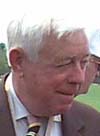
As a distinguished soldier, engineer, educator and public servant, John Woodland Morris has rendered a lifetime of extraordinary service to the civil engineering profession, to the United States Army and to his country. In successive positions of increasing responsibility, General Morris has exemplified outstanding devotion to the principles expressed in the motto of the United States Military Academy — Duty, Honor, Country.
Read More
In a career spanning more than five decades, the incomparable measure of his military engineering achievement has been demonstrated at every level of Army engineer command from platoon leader to Chief of Engineers.
Graduating from West Point in June 1943, General Morris began his career in military and civil engineering in the midst of World War II, building military airfields in the Pacific.
Following World War II, he attended the University of Iowa, earning his Master of Science Degree in Civil Engineering. In the decades that followed, he continued his military and civil engineering education, attending the Army Command and General Staff College, the Army War College, and the University of Pittsburgh.
In 1960, he was posted to Korea to command the 8th Engineer Battalion. Following his tour in Korea, he was assigned as the District Engineer in Tulsa, Oklahoma. In 1965, he returned to his Alma Mater to command the 3d Regiment of the Corps of Cadets and later to serve as Deputy Commandant of Cadets.
General Morris next moved to the Pentagon, as Deputy Chief of Legislative Liaison, where he honed his Congressional negotiating skills, later to serve him so well in testimony before Congress. In 1969, he was promoted to Brigadier General and assigned to Vietnam as Commanding General, 18th Engineer Brigade. In this role his command experience and inspired leadership were highly visible as his brigade provided outstanding combat support and carried out key military engineering projects, including the major highway construction program for the northern half of South Vietnam.
In 1970, General Morris assumed command of the Missouri River Division where he managed the Corps’ military construction and water resources programs throughout the eleven states of the Missouri River Basin. While in this position, he recognized the need to promote the public image of the Corps of Engineers, developing the slogan “The Corps Cares.” Widely publicized, this slogan helped gain much-needed public support of projects of substantial national importance.
In 1972, General Morris returned to the Pentagon, as the Director of Civil Works in the Office of the Chief of Engineers. His responsibilities included the planning, design, and implementation of the Corps’ three billion dollar national civil works program. As Director of Civil Works, he was repeatedly called upon to testify before Congress. His remarkable grasp of the civil works program and his adroit advocacy of its support ensured Congressional approval.
In 1976, General Morris was selected as the 44th Chief of Engineers. The hallmark of his tour as Chief was his recognition of the Corps’ responsibility to protect the environment and preserve the Nation’s resources. The decade of the 1970s brought the Corps of Engineers into frequent confrontation with environmental groups and no group was more critical that the Audubon Society of America. Yet in recognition of his leadership in developing “Environmental Consciousness in Engineering,” General Morris became the first recipient of the Society’s highest honor, The Palladium Award.
As Chief of Engineers, General Morris molded a strong and dynamic Army Support team. Under his leadership, the office of the Chief of Engineers and its subordinate commands were re-designated a Major Command of the Army. Within this new command, General Morris established a Directorate of Military Programs to provide more responsive engineer support to the Army worldwide. He also established a Foreign Projects office through which he executed a twenty billion dollar military design and construction program in Saudi Arabia and managed the urgent construction of the two military air bases in Israel.
In recognition of his contributions towards opening the Middle East to US Business, General Morris was chosen by the Engineering News Record as its “Construction Man of the Year,” the only military engineer ever to be so honored.
Following military retirement in 1980, General Morris continued his impressive career, gaining further distinction as an engineering management consultant. Soon after entering the civil sector, he personally prepared the dam safety “Terms of Reference,” which have become the worldwide safety standards imposed by the International Committee on Large Dams.
His similar work in the environmental arena led the International Navigation Congress to mandate environmental considerations in all design and maintenance programs for waterways and ports. For this seminal work, he was recognized by the King of Belgium with the Award of Excellence in Engineering.
Renowned for his peerless civil engineering expertise and stature, General Morris has been sought out by both national and international clients seeking his advice and assistance. He served on Presidential missions to Russia, China, and Egypt. He has been a consultant to the World Bank, to various Federal Agencies, and to several foreign governments.
General Morris’ post-retirement achievements have left their imprints in the field of education. In 1983, he personally drafted for the University of Maryland a 36-hour graduate level course in construction engineering management. He then was appointed First Chair Professor of this popular program. This experience led to his teaching a 3-week Management Course in Nanking, China, to top-level engineers involved with construction of the Three Gorges Dam. His other educational contributions include service as an Advisory Board Member for the Dean of Engineering and Mathematics at the University of Vermont and as guest lecturer at Rensselaer Polytechnic Institute, the University of Helsinki, Virginia Polytechnic Institute, the University of Florida, the Army War College, and West Point.
General Morris’ engineering achievements have been recognized by every major sector of the civil engineering profession. Of his twenty-one professional awards, his most notable honor is his recent selection to receive the Founders Award of the National Academy of Engineering. This award, the most prestigious of the engineering profession, recognizes General Morris as one of the nation’s foremost engineers of the past thirty years.
West Point, the nation’s first engineering school, produced the engineers who built the nation’s infrastructure, making possible the attainment of its manifest destiny. General Morris’ lifetime of extraordinary accomplishment, a century and a half later, places him in the historic company of those earlier graduates.
General Morris’ career of uncommon achievement and selfless devotion serves as a magnificent example to others to emulate and clearly reflects the principles and ideals embedded in the motto of West Point. Accordingly, the Association of Graduates takes great pride in presenting the 1998 Distinguished Graduate Award to John Woodland Morris, USMA Class of June 1943.
John A. Hammack
Chairman and CEO
Mr. Bernard W. Abrams ’47
As a valiant and decorated combat infantryman whose military career was cut short when he was medically retired as a result of wounds received in action in Korea, Bernard W. Abrams returned to civilian life to become a successful businessman, community, state and federal volunteer, philanthropist, and friend of West Point whose myriad activities exemplify the principles of Duty, Honor, Country.
Read More
Upon graduation in 1947, Abrams served with the 26th Infantry on occupation duty in Europe before being assigned as a platoon leader of the 81mm Mortar Company of the 15th Infantry Regiment, 3rd Infantry Division in the Republic of Korea in 1950. During this combat tour he also served as a battalion assistant operations officer and a company commander, was awarded the Combat Infantryman Badge, the Bronze Star with “V” device and the Silver Star, and was twice wounded in action. During the dark days of the withdrawal to and evacuation of Hungnam in December of 1950, Abrams’ unit was one of the last to depart the beleaguered port. His second wound, received in September of 1951, eventually ended his military career, leading to his retirement for disability.
Major General U.S. Grant, grandson of President Grant and classmate of General Douglas MacArthur, also a patient at Walter Reed at the time, advised Abrams to take medical retirement and said, “You can serve the Army better on the outside.” His words were highly prophetic. Returning to the family business, Abrams worked hard to serve the Army, eventually becoming civilian aide to the Secretary of the Army for seven years, from 1978 to 1985, and achieving civilian aide emeritus status in 1985. For this service he was recognized with the Department of the Army Outstanding Civilian Service Award. He also was honored by the Association of the United States Army with their General Creighton W. Abrams medal in 1990 for “the development of programs to benefit the Army community” and by the United Services Organization (USO) with their World and National Board of Governors Awards and the State of Georgia Patriot Award for his service to that organization devoted to the welfare of our soldiers.
In 1953, Abrams was one of the original founders of the West Point Society of Atlanta, served as its first secretary and, later, during 1959–62, as president. He also is active in Admissions, having first served as Chairman of the Appointments Committee for the 5th Congressional District of Georgia in 1968–70, and remains involved to the present day. In 1987 he established the Westminster Schools West Point Award for tenth and eleventh grade students in the Atlanta area and saw several recipients of the award go on to receive appointments to West Point. Equally important, a number of other students who did not receive the award also became interested in West Point and successfully competed for appointments.
Abrams was one of the original members of the Board of Directors of the Jewish Chapel and a generous contributor to the Jewish Chapel Building Fund. He also contributed funds to support general cadet activities as well as those of the Jewish Cadet Chapel Squad. Additionally, he served as White House Liaison for the Jewish War Veterans, U.S. A. and as a Jewish Welfare Federation fundraiser.
As Chairman and President of the Advisory Board, Atlanta Area Council, Boy Scouts of America, Abrams was honored with the coveted Silver Beaver Award. After serving as Chairman and Chief Executive Officer of Abrams Industries, Inc. from 1972 to 1995, he now continues to serve as the Chairman of the Executive Committee. Throughout his life — in combat, in business, in philanthropic activities — he has sought to make a meaningful contribution to society. Through a lifetime of service to God, country and community, Captain Bernard W. Abrams, U.S. Army Retired, truly epitomizes the principles inherent in the West Point motto of Duty, Honor, Country.
Accordingly, the Association of Graduates of the United States Military Academy takes great pride in presenting the 1998 Distinguished Graduate Award to Bernard William Abrams, USMA Class of 1947.
John A. Hammack
Chairman and CEO
Maj Gen (R) Michael Collins ’52
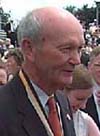
As a distinguished Air Force officer and intrepid astronaut; as a bold and courageous pioneer who spearheaded the American conquest of space; as Command Module pilot on mankind’s historic first landing on the moon; as an Assistant Secretary of State for Public Affairs who initiated progressive and dynamic educational programs for the nation’s youth; and as the architect whose vision foresight and innovative leadership created the National Air and Space Museum, Michael Collins has served his country with distinction and integrity in a wide variety of endeavors throughout a career spanning nearly five decades.
Read More
Born in Rome, Italy, in 1930, Michael Collins graduated from the Military Academy in 1952 and was commissioned in the Air Force. Following pilot training at a number of bases, he was assigned to Nellis Air Force Base for advanced day fighter training in F-86 Sabrejets. Upon completion of the eleven-week course, he was assigned to the 21st Fighter-Bomber Wing at Victorville, California. In December 1954, the Wing was transferred to France, where he flew F-86 fighters until late 1957. He then returned to the United States to attend an aircraft maintenance officers course at Chanute Air Force Base, Illinois. He completed the nine-month course in six months and was then assigned as an instructor at the school.
For two years, Captain Collins commanded a Mobile Training Detachment, and later, a Field Training Detachment at Chanute and Nellis Air Force Bases. In 1960, he was assigned to the Air Force Experimental Flight Test Pilot School at Edwards Air Force Base, California.
In 1961, Captain Collins completed Test Pilot School and was assigned to Fighter Operations. For the next two years at Edwards Air Force Base he tested new, sophisticated, and experimental Air Force fighters. Determined to improve his qualifications for selection as an astronaut, he enrolled in the newly established Aerospace Research Pilot School in 1963. Later that year, he was chosen as one of fourteen new astronauts from an original list of 271 applicants.
In the Spring of 1964, then Major Collins began his six-year career as an astronaut. Two years later, he commanded the Gemini 10 mission, setting a world altitude record and taking on the important task of walking in space to service an orbiting satellite. As the 17th American in space, Michael Collins was the first astronaut to walk out twice during a single mission, and in doing so, he helped to demonstrate the growing potential of man to perform the tasks essential to building and maintaining useful satellites in earth orbit. This mission projected him into national prominence portending the spectacular success of Apollo 11 just three years in the future.
In July, 1969, Colonel Collins became the Command Module pilot on Apollo 11, the historic first mission to land on the moon, and the most widely viewed and daring exploration of all time. As Command Module Pilot, he circumnavigated the moon alone while Eagle Astronauts Armstrong and Aldrin descended to the lunar surface.
Colonel Collins was given the honor of addressing a joint session of Congress, and shortly thereafter he resigned his commission in the Air Force to take up the position of Assistant Secretary of State for Public Affairs. His primary responsibility with State Department was focused on its relations with the American public, with special emphasis on communicating with our youth.
Assistant Secretary Collins initiated a comprehensive youth participation program with several forward-looking aspects. His leadership made a strong impact and helped to provide a change in the essentially negative attitude on American campuses at the height of the Vietnam War.
In 1971, after fifteen months with the State Department, he was offered the opportunity to construct and then direct the newly authorized National Air and Space Museum. Thus, Michael Collins began what became an enduring and vitally important contribution to America — the building and operation of the Smithsonian’s most popular museum.
He was to spend seven years as the Museum’s director, but first he was charged with the task of organizing a staff, constructing a building, and furnishing its exhibits in time for the opening on July 4, 1976, to celebrate the nation’s bicentennial. That he brought in this enterprise ahead of schedule and under budget was a remarkable achievement; that this museum continues to draw some ten million visitors a year after over twenty years of operation is a lasting testament to Michael Collins’ understanding of the role it would play in fostering the public interest in air and space exploration.
He demonstrated an outstanding ability to direct, coordinate, and organize the efforts of a wide range of people: contractors, scientists, artists, preservationists, historians, and the air and space community at large. A fitting capstone to a career spanning over thirty years of service to his country, the National Air and Space Museum enabled Michael Collins to realize his vision of teaching American youth their heritage and inspiring all to look to the future in space.
In 1970, he joined the Air Force Reserve, reaching the rank of major general in 1976. His duties included mobilization planning at Headquarters, U.S. Air Force and Air Force Systems Command at Andrews Air Force Base. Upon his retirement in 1982, he was lauded for his exemplary energy and intelligence in putting together the “best Reserve program of any major command in the Air Force.”
After seven years as Director of the National Air and Space Museum, in 1978 General Collins was named Under Secretary for the Smithsonian Institution, responsible for administering its far-flung enterprises throughout this country and overseas. His unique managerial skills enabled him to make an immediate and positive impact on the operations of the Smithsonian. Upon his departure in 1980, his commendation stated that “. . . the Smithsonian and the Nation are forever indebted to him for his service.”
In 1980, General Collins became Vice-President for Field Operations, Vought Corporation, a position he held until 1985, when he resigned to become an independent consultant.
Michael Collins is the author of several books on space. In 1974 he wrote Carrying the Fire, describing his experiences in the space program. It is the single best book of its genre and remains to this day the standard reference on space travel.
General Collins has been awarded the Presidential Medal of Freedom, the Collier Trophy, the Harmon Trophy, the Thomas D. White Trophy, and the Goddard Trophy. The Air Force awarded him the Distinguished Service Medal with Oak Leaf Cluster and the Distinguished Flying Cross. NASA awarded General Collins its Distinguished Service Medal and the Exceptional Service Medal. Eleven foreign countries have decorated him for his space achievements. His likeness appears on a Romanian stamp issue.
Among his many affiliations, he is a Fellow, American Astronautical Society; Fellow, American Institute of Aeronautics and Astronautics; Board of Directors, Air Force Historical Foundation; Trustee, National Geographic Society; and a member of the Society of Experimental Test Pilots and the Washington Institute of Foreign Affairs. He has been awarded honorary degrees from six colleges and universities.
General Collins’ career exemplifies the purpose of the Military Academy: to produce graduates who will give a lifetime of service to this country. In over thirty years of dedication to the ideals of West Point, Michael Collins has made permanent and invaluable contributions to the national security. His resolute courage and peerless leadership as an astronaut on perilous and record-setting missions have insured his place in history’s pantheon of eminent explorers. No one has served his country better in a wide variety of difficult and challenging assignments than General Collins.
Accordingly, the Association of Graduates takes pride in presenting the 1998 Distinguished Graduate Award to Michael Collins, USMA Class of 1952.
John A. Hammack
Chairman and CEO

